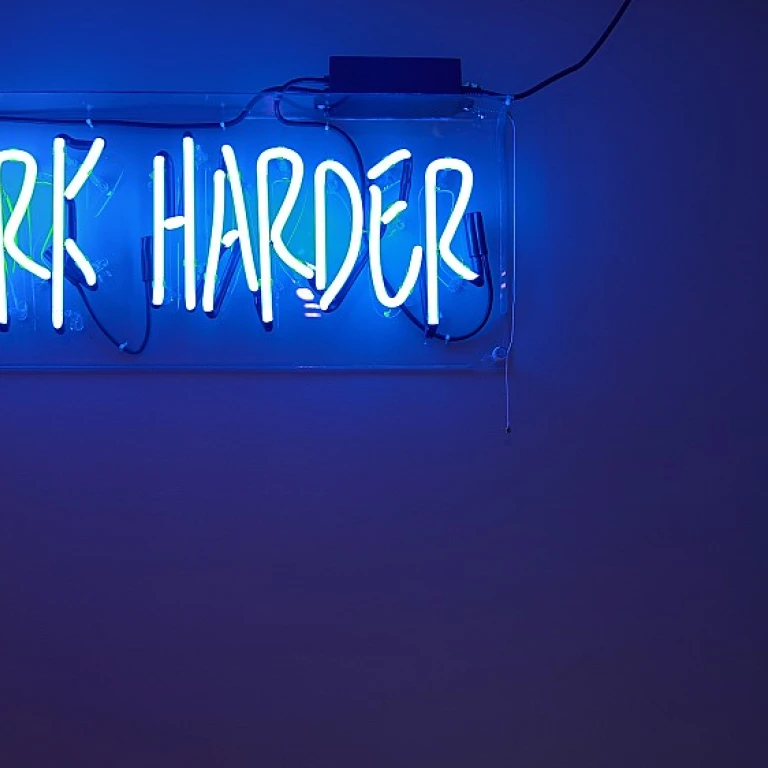
Understanding the Role of Failure in Leadership
Recognizing Failure as a Stepping Stone to Success
Understanding the role of failure in leadership is crucial for personal and professional growth. Often perceived as something to avoid at all costs, failure actually serves as a valuable teacher in our life’s journey. In the context of leadership, encountering setbacks presents unique opportunities to develop a resilient mindset and learn new lessons that conventional success cannot offer. Embracing failure allows leaders to transform their mistakes into stepping stones for future achievements. To truly harness the potential of failure as a pathway to growth, it must be seen not as a definitive end, but as a moment in time where invaluable insights are gained. Failing forward—an approach where failures are seen as opportunities for development—shifts the mindset from fear failure to growth mindset. This perspective encourages leaders to embrace challenges, take calculated risks, and move forward even when outcomes aren't guaranteed. Contrary to the belief that failure stifles progress, effective leaders learn failure can be a catalyst for innovation. By analyzing mistakes and learning from past experiences, they can pivot strategies to achieve outstanding results. This process of failure learning cultivates resilience in facing adversities and nurtures a culture of openness to constructive criticism. Ultimately, recognizing failure for what it truly is—a stepping stone to greater achievements—lays the foundation for thriving in complex, dynamic environments. Leadership is not about avoiding every misstep, but rather, leveraging each setback as an opportunity to foster growth and drive success.Cultivating a Growth Mindset
The Power of Developing a Progressive Attitude
To truly embrace failure as a stepping stone to success, it's essential to cultivate a mindset geared towards growth and learning. Fostering a progressive attitude means viewing every failure as an opportunity for personal and professional development rather than a setback. This mindset enables leaders to learn from their mistakes, ultimately fostering resilience through times of adversity.
A growth mindset is not simply an abstract concept but a tangible tool that helps individuals move forward despite challenges. By acknowledging that failure isn't a definitive endpoint but rather a part of the journey, leaders set the stage for continuous learning and innovation. This mindset shifts perspectives, turning failures into valuable lessons learned that contribute to life-long development.
Moreover, embracing a growth mindset normalizes the culture of constructive feedback and calculated risks within organizations. It reduces the fear of failure and empowers teams to innovate, knowing that setbacks are not only accepted but are integral to the path of progress. This cultural shift allows organizations to transform failures into opportunities for growth, enhancing creativity and driving meaningful change over time.
Through fostering an environment where failure is seen as a learning opportunity, leaders set an example for others to emulate. They illustrate the importance of resilience, encouraging their teams to embrace failure as a natural and necessary part of the leadership journey. By doing so, leaders and their teams are better equipped to fail forward and leverage each failure as a stepping stone to greater success.
Learning from Past Mistakes
Deriving Value from Past Errors
Embracing failure involves more than just recognizing missteps; it requires a proactive approach to extract valuable lessons from each stumble. This approach transforms errors into stepping stones toward future success. Failing is not a setback but an opportunity for growth. These instances can be leveraged to develop a robust understanding of what adjustments are necessary to move forward effectively. Taking time to thoroughly analyze past mistakes can foster resilience and foster a culture of growth within leadership. By delving into the reasons behind failures, leaders can identify patterns, challenge assumptions, and convert failures into opportunities. By facing the fear of failure, leaders can shift their mindset towards one that welcomes innovation and constructive change. Consider these strategies when reflecting on past mistakes:- Identify Patterns: Examine recurring issues to understand deeper systemic problems within a team or organization.
- Challenge Assumptions: Question preconceived notions that may have contributed to the failure.
- Convert to Insights: Translate lessons learned into actionable strategies and improvements for future projects.
Building Resilience Through Adversity
Transforming Setbacks into Building Blocks for Long-term Success
Facing setbacks in the journey of leadership is inevitable, but it's how leaders respond to these challenges that can define their trajectory. Embracing failure and viewing it not as a terminal end but as a stepping stone is crucial. This involves redefining what failure means within a personal and organizational context and recognizing it as an opportunity for learning and growth. The concept of "failing forward," as discussed previously, emphasizes the importance of using each failure as a stepping stone towards success. This mindset shift can transform perceived missteps into powerful lessons that propel personal growth and resilience. When leaders embrace this perspective, they not only cultivate their resilience but also establish a culture that celebrates learning from mistakes. Building resilience through adversity demands an acceptance of failure as an integral part of the journey. Rather than viewing setbacks as hurdles, leaders should see them as critical moments for reflection, learning, and ultimately, innovation. Resilient leaders are those who utilize failure opportunities to fuel their development, learning from each experience to navigate future challenges more effectively. Moreover, fostering an environment that supports calculated risks can be instrumental in achieving long-term success. Leaders should encourage their teams to explore new ideas, understanding that innovation often stems from trial and error. Constructive feedback, as explored in previous sections, plays a vital role in enhancing learning from each failure. It helps individuals understand their mistakes, adapt, and ultimately move forward with improved strategies and solutions. In conclusion, embracing failures is not merely about enduring tough times; it's about understanding the invaluable lessons they offer. By transforming these setbacks into building blocks, leaders can pave the way for sustained personal and organizational success.Encouraging a Culture of Constructive Feedback
Fostering a Supportive Environment for Feedback
Embracing failure as a pathway to growth in leadership isn’t just about personal introspection. It involves creating and nurturing a culture where feedback is welcomed and utilized constructively. Learning from mistakes requires a collective mindset shift, where failing isn’t feared but rather viewed as a stepping stone to success. A crucial first step in building such a culture is recognizing that feedback is not synonymous with criticism. Instead, it represents an opportunity for growth and learning, both on a personal and organizational level. By embracing failure and encouraging open dialogue, teams can foster innovation and progress.- Encouraging Open Communication: Create channels where employees feel comfortable sharing insights and mistakes without judgment. Open communication helps transform setbacks into valuable lessons learned and fuels personal growth.
- Seeing Setbacks as Opportunities: A growth mindset helps leaders understand that each failure is a chance to move forward and innovate. It’s about transforming every failure into a learning opportunity and ultimate success.
- Promoting a Growth Mindset: Leaders need to embody and promote a growth mindset by modeling resilience and learning from their own failures. This mindset isn't just a personal trait but a collective culture that needs nurturing over time.
Implementing Change and Innovation
Implementing Transformational Change Through Innovation
Embracing failure as a stepping stone to success paves the way for innovative transformation in leadership. Taking calculated risks allows leaders to move forward, acting on the lessons learned from past mistakes. By learning from failures and setbacks, leaders are empowered to embrace a culture of innovation. Incorporating innovation involves:- Mindset Shift: Leaders must foster a growth mindset to challenge the status quo. This mindset encourages learning from failure and viewing it as an opportunity rather than a setback.
- Encouraging Creativity: Innovation thrives in an environment where team members feel free to propose novel ideas without fear of failure. Encouraging a failing forward attitude helps in transforming setbacks into stepping stones for personal growth.
- Iterative Processes: Implementing a trial-and-error approach can lead to significant breakthroughs. Continuous learning and adaptation from small failures help evolve effective strategies over time.
- Feedback Mechanism: Regular constructive feedback helps identify areas for innovation, turning failure learning into actionable insights.












